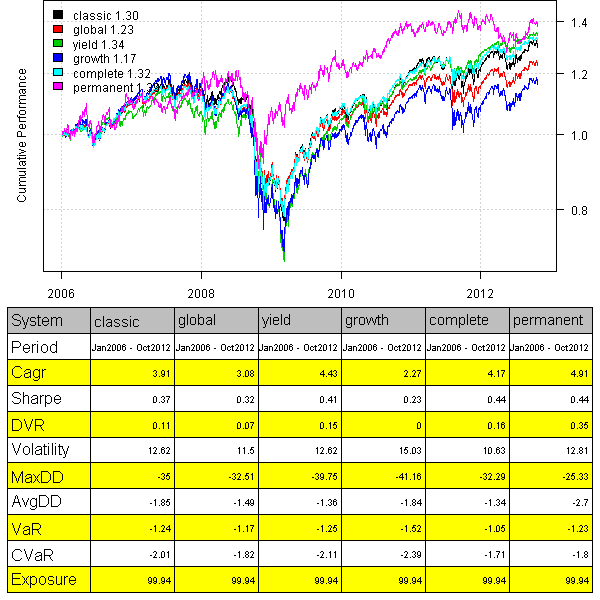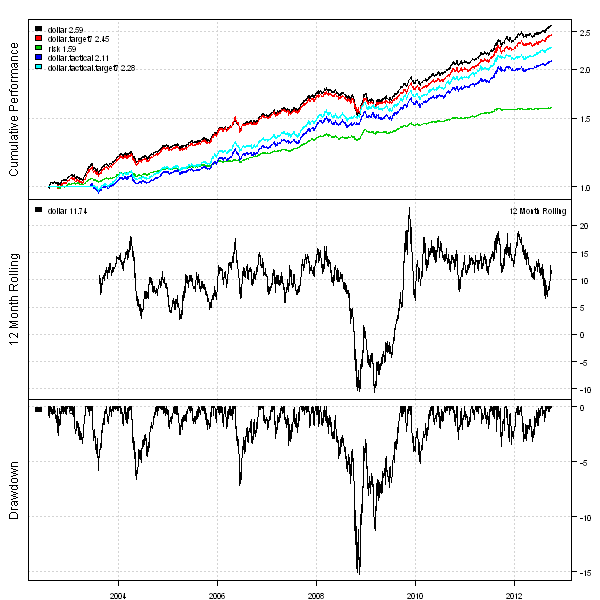Use ETFs to Replicate the Permanent Portfolio Strategy
Post on: 31 Июль, 2015 No Comment

Get the strategy but reduce the costs
Create A Permanent Portfolio with ETFs
Investment fads come and go but one strategy that attempts to be good all the time is the “Permanent Portfolio” technique. What is it and how does it work?
The Permanent Portfolio concept was developed by free-market investment analyst Harry Browne in the 1980s. Browne assembled an investment portfolio that gave equal exposure to growth stocks, precious metals, cash and government bonds. According to his theory, this type of investment mix would be safe and profitable in any kind of economic cycle.
Using Browne’s ideas as the basis for an investment strategy, the Permanent Portfolio mutual fund (NASDAQ: PRPFX ) was launched in 1982. Despite lagging the S&P 500 index (NYSE: SPY ) since its inception, the Permanent Portfolio has produced an after-tax gain of 9.34% over the past ten years compared to the S&P’s 1.59% loss.
Today, the fund is managed by Michael Cuggino, a certified public accountant by training. Currently, Cuggino has the following investment mix: 35% in U.S. Treasurys, bonds and other dollar-denominated assets, 20% in gold, 15% in aggressive growth stocks, 15% in natural resources stocks and domestic and foreign real estate, 10% in Swiss francs and 5% in silver.
Constructing a Permanent ETF Portfolio
One problem with the Permanent Portfolio fund isn’t so much its strategy as its annual expenses of 0.82%. That’s a lot of money to fork over in investment fees, especially for a mutual fund that invests 60% of its assets in cash, precious metals and U.S. Treasurys. What if we replicated the Permanent Portfolio but with operating lower costs?
Below is an example of how the Permanent Portfolio using ETFs would look. The corresponding ETF ticker symbols are next to each asset class.
- 35% in U.S. Treasurys (NYSE: TLH ) and U.S. Corporate Bonds (NYSE: LQD )
- 20% in Gold (NYSE: IAU )
- 15% in Natural Resources (NYSE: GNR ) and Foreign Real Estate Stocks (NYSE: RWX )
- 15% in Large-Cap Growth Stocks (NYSE: VONG )
- 10% in Swiss Francs (NYSE: FXF )
- 5% in Silver (NYSE: SIVR )

The expenses averaged out for the ETF Portfolio using the Permanent Strategy come out to 0.32% compared to 0.82% for PRPFX. That’s an extra half-percent in savings for the portfolio’s owner morning coffee and then some!
Conclusion
Even though the Permanent Portfolio theory has worked over the past decade, there are a few caveats to keep in mind.
First, its performance is likely lag stocks in a rising market because of its heavy exposure to cash, bonds and precious metals. Also, long periods of underperformance for precious metals like the time period from 1980-2008 will put a damper on future performance.
Lastly, the Permanent Portfolio strategy isn’t especially attractive for income-minded investors. At the end of September, PRPFX’s dividend yield was a mere 0.65% and even worse, that entire yield is being fully consumed by the fund’s 0.82% annual expense ratio.
In summary, the Permanent Portfolio can be easily accomplished using lower cost ETFs. That means you’ll receive more of your deserved share of future potential gains. What’s wrong with that?
This article is brought to you by ETFguide.com. ETFguide is the information leader on exchange-traded funds because of its vendor-neutral approach and its progressive reporting style. Unique features include an ETF bookstore, a monthly e-mail newsletter and subscription-based ETF portfolios.
3 GameChanger Stocks to Buy Before Election Day. It is critical that you act today to position yourself to profit no matter what the midterm elections deliver. I’ve identified three stocks that I urge you to buy today for money-doubling profits in the year ahead regardless of what happens in Washington. Get “3 GameChanger Stocks to Buy Before Election Day” a brand-new FREE report from Hilary Kramer of GameChangers.
investorplace.com/2010/10/create-a-permanent-portfolio-with-etfs/.














